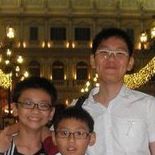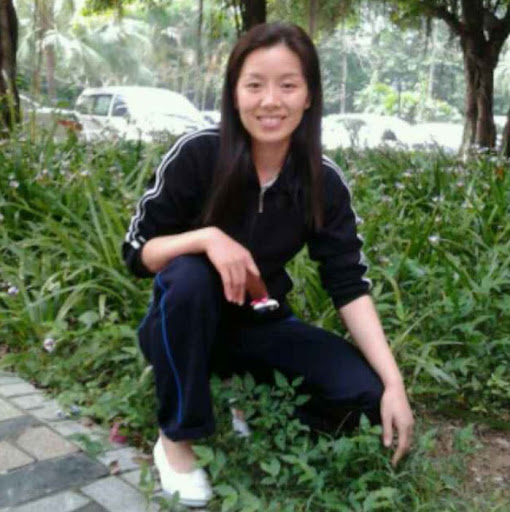Ming Chu Zheng
age ~60
from Fremont, CA
- Also known as:
-
- Mingchu P Zheng
- Ming C Zheng
- Mingchu Chu Zheng
- Mingchu Pearl Zheng
- Ming Chu Vheng
- Ming C Vheng
- Mingchu Chu Zhengming
- Ming C Xigui
- Chu Zheng Mingchu
- Phone and address:
- 571 Seville Pl, Fremont, CA 94539
Ming Zheng Phones & Addresses
- 571 Seville Pl, Fremont, CA 94539
- 3408 Whitehall Ct, Pleasanton, CA 94588
- 3958 Stoneridge Dr, Pleasanton, CA 94588
- Highlands Ranch, CO
- Denver, CO
- Manassas, VA
- Washington, DC
- Lone Tree, CO
- Mesquite, TX
Us Patents
-
Systems And Methods For Alignment Of Objects In Images
view source -
US Patent:7869664, Jan 11, 2011
-
Filed:Jun 21, 2007
-
Appl. No.:11/820939
-
Inventors:Peng Lu - Mountain View CA, US
Ming Zheng - Mountain View CA, US
Guochun Liao - Belmont CA, US -
Assignee:F. Hoffmann-La Roche AG - Basel
-
International Classification:G06K 9/32
G06K 9/00 -
US Classification:382294, 382128
-
Abstract:Systems and methods for aligning objects in object sets are provided. An object set has objects that are in a corresponding image in a plurality of images. For each respective object in a first object set, a corresponding object group is constructed that contains the respective object, thereby constructing a plurality of object groups. Similarity metrics are computed between object groups and objects in objects sets in order to assign the objects to object groups. The object groups are then refined in order to align objects in the object sets.
-
Partitioning Agricultural Fields For Annotation
view source -
US Patent:20220215037, Jul 7, 2022
-
Filed:Mar 28, 2022
-
Appl. No.:17/706317
-
Inventors:- Mountain View CA, US
Ming Zheng - Redwood City CA, US
Elliott Grant - Woodside CA, US
Nanzhu Wang - San Jose CA, US
Cheng-en Guo - Santa Clara CA, US
Aleksandra Deis - Sunnvayle CA, US -
International Classification:G06F 16/26
G06F 16/29
G06F 16/904
G06F 3/04847
G06F 16/9038
G06F 16/28
G06Q 50/02
G06F 16/248
G06Q 10/06
G06F 16/906 -
Abstract:Some implementations herein relate to a graphical user interface (GUI) that facilitates dynamically partitioning agricultural fields into clusters on an individual agricultural field-basis using agricultural features. A map of a geographic area containing a plurality of agricultural fields may be rendered as part of a GUI. The agricultural fields may be partitioned into a first set of clusters based on a first granularity value and agricultural features of individual agricultural fields. The individual agricultural fields may be visually annotated in the GUI to convey the first set of clusters of similar agricultural fields. Upon receipt of a second granularity value different from the first granularity value, the agricultural fields may be partitioned into a second set of clusters of similar agricultural fields. The map of the geographic area may be updated so that individual agricultural fields are visually annotated to convey the second set of clusters.
-
Normalizing Counts Of Plant-Parts-Of-Interest
view source -
US Patent:20230072361, Mar 9, 2023
-
Filed:Nov 14, 2022
-
Appl. No.:17/986358
-
Inventors:- Mountain View CA, US
Bodi Yuan - Sunnyvale CA, US
Ming Zheng - Redwood City CA, US -
International Classification:G06T 7/00
G06V 20/10
G06V 10/22
G06N 3/04
G06N 3/08
G06T 7/60 -
Abstract:Implementations are described herein for normalizing counts of plant-parts-of-interest detected in digital imagery to account for differences in spatial dimensions of plants, particularly plant heights. In various implementations, one or more digital images depicting a top of a first plant may be processed. The one or more digital images may have been acquired by a vision sensor carried over top of the first plant by a ground-based vehicle. Based on the processing: a distance of the vision sensor to the first plant may be estimated, and a count of visible plant-parts-of-interest that were captured within a field of view of the vision sensor may be determined. Based on the estimated distance, the count of visible plant-parts-of-interest may be normalized with another count of visible plant-parts-of-interest determined from one or more digital images capturing a second plant.
-
Nanotube Spectrometer Array And Making A Nanotube Spectrometer Array
view source -
US Patent:20210399225, Dec 23, 2021
-
Filed:Oct 9, 2020
-
Appl. No.:17/066565
-
Inventors:- Gaithersburg MD, US
Ming Zheng - Rockville MD, US -
International Classification:H01L 51/00
G01J 3/28
G01J 3/02 -
Abstract:A nanotube spectrometer array includes: a substrate including block receivers; photodetectors arranged in an array with each photodetector including: a single wall carbon nanotube disposed on the substrate in a block receiver and disposed laterally along the block receiver; a source electrode on the single wall carbon nanotube; a drain electrode on the single wall carbon nanotube, such that the source and drain electrodes are separated from each other by a photoreceiver portion of the single wall carbon nanotube; and a gate electrode disposed on the substrate such that substrate is interposed between the gate electrode and the single wall carbon nanotube. The single wall carbon nanotube in each photodetector is a different chirality so that each photodetector absorbs light with a maximum photon absorptivity at a difference wavelength that is based on the chirality of the single wall carbon nanotube of the photodetector.
-
Redox Sorting Of Carbon Nanotubes
view source -
US Patent:20180016148, Jan 18, 2018
-
Filed:Jan 22, 2016
-
Appl. No.:15/545659
-
Inventors:Jason K. Streit - Gaithersburg MD, US
Angela R. Hight Walker - Gaithersburg MD, US
Ming Zheng - Gaithersburg MD, US
- Los Angeles CA, US
Ming Zheng - Rockville MD, US -
International Classification:C01B 32/172
C01B 32/17
B82Y 30/00
B82Y 40/00 -
Abstract:A method of separating and extracting carbon nanotubes, the method includes introducing the carbon nanotubes into a two-phase system that includes a first component and a second component, the first component being different from the second component. The method includes introducing a chemical agent into the two-phase system, mixing the chemical agent and the carbon nanotubes in the two-phase system, removing the first component to extract a first portion of the carbon nanotubes contained in the first component after the mixing, replenishing the two-phase system with fresh first component, and extracting a second portion of the carbon nanotubes contained in the fresh first component. A bandgap of the carbon nanotubes in the first portion is different from the bandgap of the carbon nanotubes in the second portion.
-
Fractionating Nanomaterials By A Liquid Multiphase Composition
view source -
US Patent:20140174991, Jun 26, 2014
-
Filed:Feb 25, 2014
-
Appl. No.:14/189619
-
Inventors:CONSTANTINE Y. KHRIPIN - GAITHERSBURG MD, US
MING ZHENG - ROCKVILLE MD, US -
Assignee:NATIONAL INSTITUTE OF STANDARDS AND TECHNOLOGY - GAITHERSBURG MD
-
International Classification:B03B 5/00
-
US Classification:209 31, 977845
-
Abstract:A process for fractionating a nanoparticle composition, the process includes combining a first polymer, a second polymer, and a solvent to form a fluid and contacting the nanoparticle composition with the fluid. The nanoparticle composition includes a plurality of first nanoparticles, a plurality of second nanoparticles, and a dispersant disposed on an exterior surface of the first nanoparticles and the second nanoparticles. Fractionating the nanoparticle composition also includes forming a multiphase composition that includes a first phase and a second phase by partitioning the first polymer and the second polymer such that a concentration of the first polymer is greater than a concentration of the second polymer in the first phase, and the concentration of the second polymer is greater than the first polymer in the second phase, wherein the solvent is present in the first phase and the second phase. Additionally, the process includes apportioning the first nanoparticles and the second nanoparticles among the first phase and the second phase to fractionate the nanoparticle composition, based on a relative affinity of the first nanoparticles and the second nanoparticles for the first polymer and the second polymer, wherein the first nanoparticles are present in the first phase and substantially absent in the second phase, and the second nanoparticles are present in the second phase and substantially absent in the first phase.
Name / Title
Company / Classification
Phones & Addresses
Principal
Ming's Salon
Beauty Shop
Beauty Shop
1549 Saratoga Ave, San Jose, CA 95129
FUYUN RESTAURANT INC
CHINA CITY RESTAURANT LLC
Resumes

Ming Zheng
view source
Ming Zheng
view source
Ming Zheng
view sourceLocation:
United States
Youtube

Kene Wo Ming Zheng
view sourceKene Woon Ming Zheng

Ming Zheng
view source
Ming Zheng
view source
Ming Zheng
view source
Ming Chong Zheng
view source
Ming Xin Zheng
view source
Ming Zheng
view source
Ming Yue Zheng
view sourceClassmates

Ming Zheng
view sourceSchools:
Friday Harbor High School Friday Harbor WA 2000-2004
Community:
Julie Buchanan

Ming Zheng
view sourceSchools:
Washington Middle School Harrison NJ 2001-2005
Community:
Miguel Pereira, Allison Nevado, Jason Fernandez, Sarah Osterkorn, Micheal Timoteo, Abner Abner, Rovena Lela, Michelle Siguenza, Fabiana Rebollo, Mark Johnson, Youssef Elhazzaz, Hsinyu Yin

Ming Zheng
view sourceSchools:
China High School China TX 1974-1978
Community:
Chris Smith, Farry Khan, Robert Butch, Anold Bates, Sue Smart, Molly Kolander, Carolyn Daniels, Melvin Mccown, Anita Jagneaux, Jessica Porter

Yong-Ming Zheng, West Hig...
view sourcePlaxo

Ming Y. Zheng
view sourceGordon College
Googleplus

Ming Zheng
Education:
Tsinghua University

Ming Zheng

Ming Zheng

Ming Zheng

Ming Zheng

Ming Zheng

Ming Zheng

Ming Zheng
Myspace
Get Report for Ming Chu Zheng from Fremont, CA, age ~60








